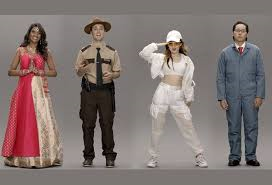The Bright Side of Viruses and their Role in Human Survival
Jaspreet Bindra
Given the panic, death and disruption caused by the COVID 19 virus, it will not surprise you that this word originated from the Sanskrit word vish, or visa, snd the Zoroastrian vīša – all meaning poison. COVID19 is a coronavirus – an ordinary virus which causes common cold and sometimes flu. Called so because of the crown-like projections on their surfaces (corona in Latin means halo or crown), this particular coronavirus originally hailing from Wuhan, threatens to become a global pandemic.
Viruses are very important to human beings and are, in fact, necessary for the survival of our species. The most numerous biological entity on earth, they are the means of transferring genes between different species, which increases genetic diversity and drives evolution – nearly 10 percent of the human genome is made of bits of virus DNA. “Viruses are a key part of what make us human”, says Professor Luis P. Villareal at the University of California. “They can be considered to be a life form, because they carry genetic material, reproduce, and evolve through natural selection, although they lack a cell structure considered necessary to count as life. Because they possess some but not all such qualities, viruses have been described as ‘organisms at the edge of life’. As nature’s microscopic zombies, viruses straddle the divide between the living and the dead.”
Viruses have two other key characteristics: they can only live and propagate by infiltrating a host cell, and they jump from species to species. Both these characteristics are what make viruses dangerous. They replace the DNA of the host cell by their own, and then compel it to multiply with this foreign DNA causing sickness. The propensity to jump from animals to human beings, called zoonosis, causes disease epidemics, since human immune systems have not built defenses against this foreign DNA. Zoonosis is old news: Measles is thought to have descended from a virus that infected cows, rabies comes from dogs and cats, and influenza originated in birds. The COVID 19 virus is thought to have originated in the vast open animal markets of China and would have been passed through human beings through bats and pangolins.
As we cohabit with machines, viruses have also metaphorically jumped to them, specifically to computers. It was John von Neumann who first described how a computer program could be designed to reproduce itself, and his design for a self-reproducing program is considered to be the world’s first computer virus. Since then, the Internet has fueled multiple ‘viral epidemics’ among computers – Mellissa, Iloveyou, Wannacry among others.
Biological and computer viruses have a lot in common. Both are much simpler than their hosts – a bio virus will have a few thousand genomic base pairs, as compared to three billion of a human cell, and a computer virus may contain as few as six lines of code compared to the tens of millions of lines of codes of an operating system. Both are nothing without their host – they need the host to survive and replicate by sending copies of themselves through coughs and sneezes or emails and messengers as the case might be. Both kill by decreasing host performance – bio viruses by killing cells, computer viruses by making computers slow down by performing unnecessary tasks. Both conceal themselves inside their hosts, making detection very difficult from white blood cells or from basic virus detection programs.
Despite the recent bad name they have gotten, viruses can be incredibly useful for us humans. Bacteriophages, a kind of virus, actively kill harmful bacteria; especially in the mucus membranes in our noses and our guts. Biologists have engineered viruses to form vaccines against Hepatitis B, and are attempting to get viruses to engineer cells to provide cures for diseases such as emphysema and cystic fibrosis. Even CRISPR/CAS9, the technology that can be used to edit genes and, therefore, could change the world, owes some of its origins to bacteriophage viruses!
A singularly innovative use of viruses is how Dr. Angela Belcher of MIT uses them to assemble a lithium-ion battery’s positive and negative electrodes, and thus create the first ‘living battery’. They boost battery performance and do not have the toxic residue that normal Li-Ion battery electrodes have. When she first submitted this idea as a post-doctoral grant proposal, the reviewer declared it “insane”. By now, however, she has made viruses that can work with 150 different materials to make batteries and demonstrated how this technique can even be used to biologically manufacture solar cells. “The benefit of using viruses, is that they already exist in this ‘nano’ form, so they are essentially a natural template or scaffold for the synthesis of battery materials.” says Konstantinos Gerasopoulos, of Johns Hopkins Applied Physics Laboratory. Belcher’s genetically engineered viruses cannot differentiate between and anode and a cathode, but they don’t need to. Their DNA is only programmed to do a simple task, but, when millions of viruses perform the same task together, they produce a usable material.
Belcher, in fact, dreams of zipping around in a “virus-powered car”. When that inevitably happens, perhaps we will have a reverse kind of machine zoonosis, where viruses will jump from a car to their drivers? Another case for driverless cars, perhaps?
(This article appeared in my column Tech Whispers in Mint dated Mar 6 2020)


